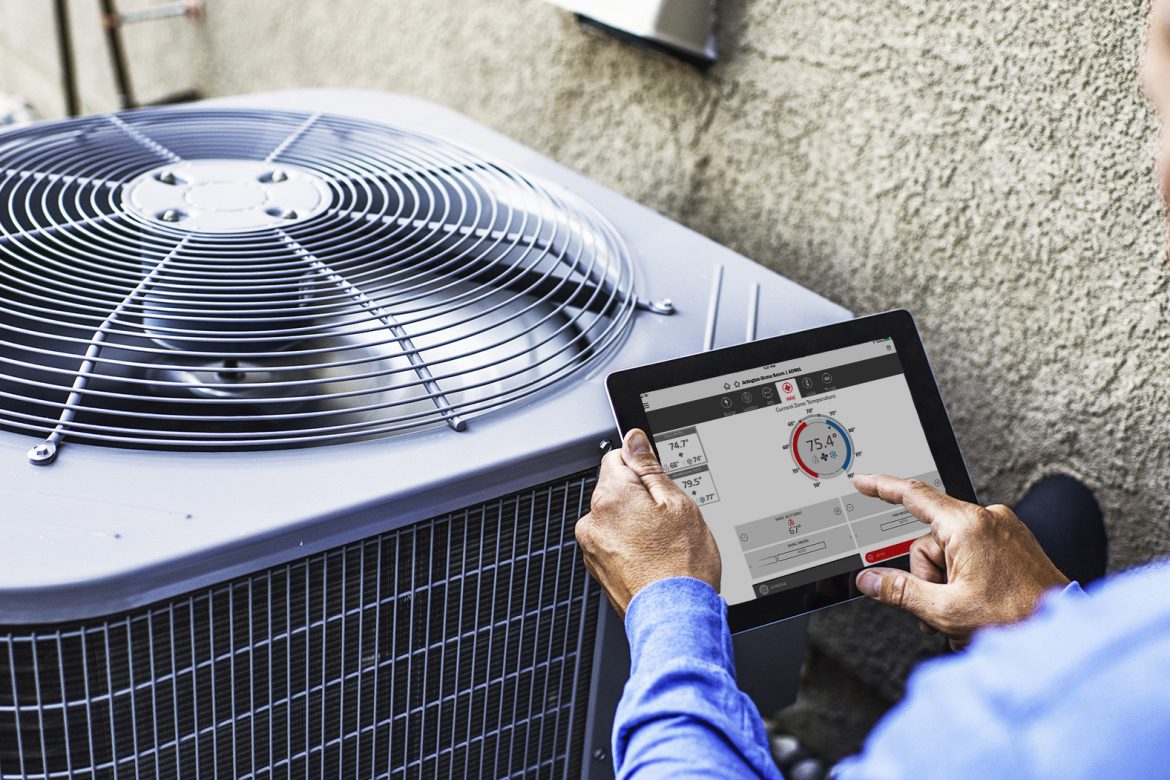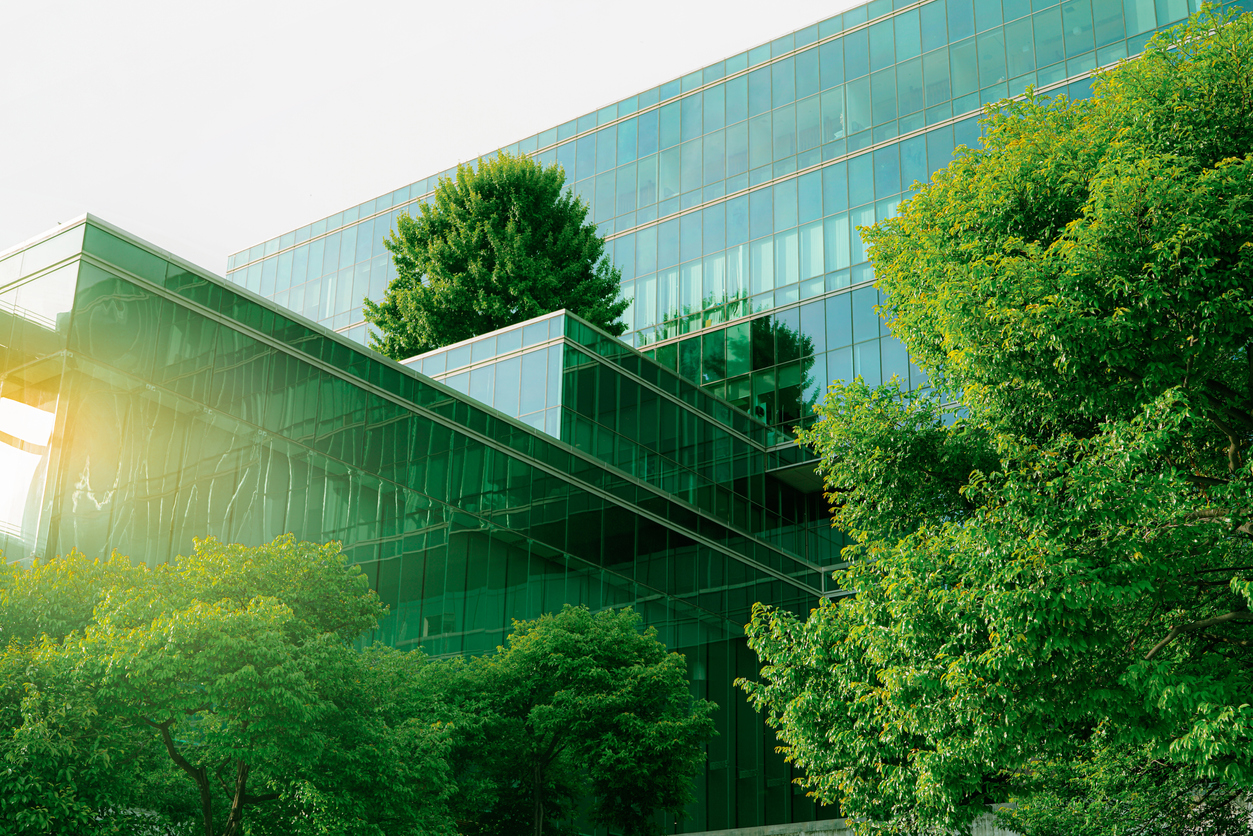When is something a trend, and when is its widespread adoption a technological advancement? Sometimes, what seems like a trend is a significant leap forward.
Throughout history, buildings have been altered to meet the needs of their occupants and incorporate modern, beneficial features. Indoor plumbing, drywall, steel technology, onsite renewable energy sources; the list is endless. Every difference between communities gathered in caves and today’s energy-efficient commercial buildings has at one time been a leap forward.
One of the driving forces of the current energy efficiency cost savings “trend” is the global movement to control carbon emissions and reduce commercial buildings’ environmental footprint.
In the U.S., 97 billion square feet of floor space are nestled within 5.9 million commercial buildings (as of 2018). And while the past few years have altered the occupancy of these buildings, the fact remains that there has been a steady increase in energy demand over the past decades as a result of the increase in commercial space. To effectively meet the needs of those demands, advancements in energy efficiency have also grown.
Why invest in energy-efficient commercial buildings?
When governments worldwide pledged to have net-zero carbon emissions over the next 30 years, it was a signal to all industries that there was work to be done.
Between 1980 and 2005, commercial floor space in the U.S. grew by 50%. While a helpful statistic to compare over time, floor space isn’t the only determining factor of how much energy a commercial site uses. Other factors include energy prices and the systems utilized within that building, such as lighting, HVAC, and more. For small to mid-sized businesses, this is where you can find the most energy efficiency cost savings.
Investing in Energy Efficiency Trends Can Save You Money
Many times, investing in new technologies is simply a smart business move. But other times, it’s a little more nuanced than that. While customers might not notice or care what kind of HVAC or lighting systems you have, current estimates show that over one-third of energy is wasted in commercial buildings. That kind of inefficiency wastes money and represents one of the most significant sources of potential cost savings.
It can seem counterintuitive to replace equipment when it’s working fine. But there is a threshold when it comes to replacing old equipment and systems, and there are many different commercial calculators that can evaluate the economic advantages of energy-efficient upgrades, retrofits, and projects for your business or building. These handy calculators consider complex numbers such as capital expenditures, operating expenses, and the financial implications of using operational but outdated equipment and systems. Some of the more advanced calculations even include the company’s added value after you update, validating the idea that customers and clients see value in inefficient, modern operations.
While many new buildings claim to be carbon-neutral, the most significant potential for increasing energy efficiency is improving, retrofitting, or upgrading existing facilities. These advancements will move us towards decommissioning remaining coal and other fossil fuel plants and cushion your bottom line as your operating costs, maintenance, and energy bills are lowered.
Improving Energy Efficiency Boosts the Entire Company
Besides meeting federal and state mandates, it’s common for local utility companies to offer incentives to improve energy efficiency in commercial buildings within their regions. These incentives, frequently aimed at achieving peak load reductions, can lower your energy costs and elevate the profile of your company and your community.
Building sustainability into your business model does more than contribute to the national and international efforts to reduce carbon emissions, it even does more than decrease your energy costs.
Including efficiency, goals contribute to building a sustainable, long-term viable, and relevant business. Studies show that companies that invest in sustainability improve job satisfaction and the health and productivity of employees while simultaneously improving utility capacity and operational efficiency.
Energy-efficient Commercial Buildings to Strive For
Establishments that take sustainability seriously and are diligent about improving energy efficiency often use various improvements, and some have reached the very pinnacle of energy-efficient commercial buildings.
The Top 10 Energy Efficient Buildings in the World exemplify ingenuity, persistence, and dedication to sustainability. Let’s take a peek at the top three.
- One Angel Square, Manchester, U.K. Standing 15 stories tall as the headquarters of The Co-operative Group, One Angel Square is an excellent example of combining multiple efficiency programs to produce one hyper-efficient building. The building utilizes low-energy LED lights and I.T. setups, a heat recovery system, and recycles rainwater and greywater. Inside is a combined heat and power plant, doubling down on cost savings and efficiency.
- David & Lucile Packard Foundation Headquarters, Los Altos, California. As the world’s largest Net-Zero Energy certified building, 95% of the Packard Foundation Headquarters was constructed with recycled materials from deconstructed buildings. Impressively, the building provides 100% of its energy needs with 915 photovoltaic panels and effective use of daylight. Another innovative feature is the rooftop gutters, which collect 20,000 gallons of water for use in the building’s bathrooms and irrigation systems.
- One Embankment Place, London, UK. Originally built in the early 1990s, One Embankment Place is the first on the list to be a retrofitted, energy-efficient building. Experiencing a massive renovation in the 2000s, it was rewarded with BREEAM’s highest recorded worldwide energy efficiency score in 2013, proving that refurbishing buildings can be successful. With one of the largest tri-generation systems globally, the building has reduced its carbon emissions by 51%.
How to improve your energy efficiency and lower your electricity bill
With electricity as the largest energy source for buildings, the possibilities for improvements are a subject of great interest.
One way is to participate in voluntary programs available to commercial buildings. National programs like ENERGY STAR and LEED are available for ambitious, well-funded projects. Still, there are plenty of opportunities and incentives at the local scale by partnering with local utility companies or 3rd parties like GridPoint that specialize in energy efficiency programs for the SMB sector.
If you are looking for the most cost-effective solution, focus on the following systems:
- Heating & Cooling
- Lighting
- Ventilation
- Appliances
- Hot water
- Thermal insulation
- Windows
- Building automation and control systems
- Invest in renewable energy sources
Today, we have access to an incredible array of information to help owners, managers, and operators decide which energy efficiency program, purchase, or retrofit is right. Standards, protocols, differences in geographic area, national or regional climate, the culture of your industry or region, building type, occupancy, and other specifics of your commercial building should be considered when evaluating opportunities to improve your energy efficiency and lower your costs.


